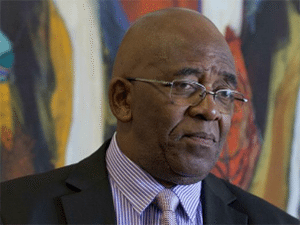
[miningmx.com] – ESKOM’s load-shedding so far has been caused by plant maintenance issues and extended delays in bringing new generating capacity on line – specifically Medupi – but there could be worse to come if Eskom does not timeously resolve its looming coal supply problems.
That’s the “coal cliff’ – a future void in the coal supplies needed to keep various existing power stations going plus feed the new Kusile power station on which tens of billions of rands have been spent without having the coal supply agreement in place.
That is a fundamental requirement but the contract is still being negotiated and construction of the New Largo colliery to feed Kusile has yet to begin.
Eskom now seems to be trying to play this down.
According to the Eskom presentation given to the IHS McCloskey South African Energy Coal Export conference held recently in Cape Town, the utility estimated it “only’ needed to secure around 2.35 billion tonnes for the long-term.
It added that, over the next decade, an average of 22 million tonnes (mt) a year will be sourced from new coal supply agreements and commented, “the majority of the uncontracted coal has been identified and is in various stages of negotiation’.
That compares with an estimate from a senior coal mining executive that Eskom still needs to contract for around 40mt/year “looking 10 years out’.
The crucial questions are: who will supply that coal and at what price?
There are no answers at this stage because of Eskom’s pricing and contracting strategies which appear to be driven increasingly by political ideology and not commercial reality. As a result two major mining houses are already reducing their exposure to Eskom business.
Eskom’s strategic intent is to pass as much of this new business as it can through to black-controlled mining companies. That’s why the utility is taking such a hard-line on the requirement that future coal supplies come from companies which are at least 50% plus 1 share black-owned.
But some of the mines to be built – like New Largo – will be huge operations requiring capital investment upwards of R10bn each.
Junior mining companies – black-owned or otherwise – simply cannot find that kind of financial support under the current grim economic conditions let alone combined with the regulatory uncertainties of operating in South Africa.
New Eskom CEO, Tshediso Matona, acknowledged part of the problem last November when he commented: “Eskom is increasingly getting coal from short-term and spot markets which is far, far higher in price than long-term contracts.
“Ideally, we want to have long-term contracts such as the cost plus mines. We would like to get back to that situation as best we can.’
In the 1980’s – when the last major build programme took place – Eskom did this through close collaboration with the mining majors of that era. Eskom came to the party by putting up the capital required to build a number of collieries which were then run on a “cost plus’ basis by the mining groups.
Fast forward to the present. There are essentially four major mining groups in the country that could build and operate large collieries: Anglo American, BHP Billiton, Glencore and Exxaro Resources.
So far Eskom has alienated Anglo American and BHP Billiton. Both groups are getting out of the South African domestic coal business. BHP Billiton is washing its hands of South Africa and hiving off its coal mines here into a separate vehicle called South 32.
Anglo CEO, Mark Cutifani, indicated in February the group’s South African domestic thermal coal business was not viewed as “a potential major contributor in the future.’
It seems Anglo now intends combining New Largo with its other domestic thermal collieries into one separate vehicle in which Anglo will sell down its stake to an unspecified level below 50% to meet Eskom BEE requirements.
Glencore is keen to get more Eskom business but, surprisingly, Eskom chairman Zola Tsotsii made it clear last year that the organisation did not seem to trust Glencore’s motivations.
That leaves Exxaro, but Exxaro is already hugely exposed to Eskom which accounts for more than 90% of its coal revenues. From Eskom’s point of view, it will be dependent on Exxaro to provide the coal to fuel around 20,000MW of its generating capacity once Medupi is up and running.
Strategically – for the sound reason of risk diversification – neither party may want further increased exposure to the other.
Then there’s the money issue. Eskom does not appear to have the funds to pay for the diesel required to keep its Open Cycle Gas Turbines generating plants running flat out alone invest billions into building new “cost plus’ collieries.
Groups like Glencore – which are prepared to build new collieries at their own cost – want a decent return on their investment in terms of the future coal price to be paid which it seems Eskom is not prepared to commit to at present.
According to a coal mining executive: “The remaining coal is deeper and more expensive to mine, but Eskom’s people cannot seem to get their heads around that.”
So,what does that leave? Declaring coal a strategic commodity and imposing domestic price controls followed by nationalisation of the coal mines if necessary?
All that will do is add the state mining company to the list of state-owned institutions requiring financial bail outs such as SAA and Eskom itself.











